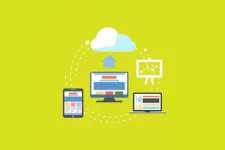If you work with data, you’ve probably heard of Snowflake. The cloud-based data warehouse-as-a-service (DWaaS) app is taking the world by storm as more and more companies move away from on-premises data warehouses. This tool is powerful by itself, but one of the main elements that render it even more useful is its many integrations. So, what are the best apps that work seamlessly within the platform? Here are our top picks.
1. 360Science’s Cortex
All that data housed and collected in your Snowflake database is only valuable if it’s accessible to users across the business. Translation: your customer data is only as strong as your employee’s access to it. With 360Science’s Cortex, you get a solution that not only helps you maintain your Snowflake data but derive real insights from it faster than ever. And with features like a drag-and-drop canvas, save-and-share workflows, and steep configuration settings, it’s sophisticated yet accessible enough for data scientists and business analysts alike.
2. DBeaver
DBeaver is an SQL client software application and a database management tool and supports any database with a JDBC driver, but it can also handle other data sources. It allows you to “manipulate your data like in a regular spreadsheet, create analytical reports based on records from different data storages [and] export information in an appropriate format”. DBeaver is also super simple and intuitive to use: perfect for developers, database administrators, and analysts alike. You can really make it your own through its open-source nature and many plugins, including a mock data generator, data transfer, and easy export/import. It can also seamlessly connect to your Snowflake data warehouse and let you manipulate it as you wish, for example, by building an ERD (Entity Relationship Diagram).
3. Holistics
Holistics is a great way of reducing the workload of data analysts, despite being a fairly new tool in the market. This is because it lets them maintain one accurate source of data that’s re-usable by even the least technical employees. Any data manager’s pet hate is to answer ad-hoc data reports and SQL translation requests from co-workers, and Holistics reduces this by enabling the data team to create preset business metrics and datasets for everyone. This enables anyone in your enterprise to access the data they require and produce reports without writing SQL or bothering an analyst. Unfortunately, it doesn’t yet support Git-integration and version control, so if you need this functionality, it may be worthwhile to look for other options. Luckily for Snowflake users though, it does allow data teams to create the necessary data models and transfer them to the DWaaS app.
4. Fivetran
If you need to engage in some advanced analytics, Fivetran will be your best friend and can stream your business data directly into Snowflake. With support for everything from Google Sheets to Facebook and sophisticated integration, it is a fantastic solution for anyone who wants to get to their insights quickly. Its ability to centralize data from a multitude of sources (marketing, sales, product, and so on) and build data products that all live in the same place is a great benefit. When you connect it to Snowflake, it can replicate all of your collected data from all of your sources into schemas.
5. PowerBI
As BI (Business Intelligence) software goes, PowerBI is probably the most well-known. Basically, it adds coherency to disparate sources of data by visualizing them into convenient dashboards of data, allowing you to deduce insights more easily. It is perfect for those who often use the Microsoft ecosystem, supports countless data sources (whether they’re Excel pages or a data warehouse like Snowflake), and centralizes information in an efficient manner. PowerBI keeps getting better through updates, and its community is thriving with lots of people finding new tips and tricks to help each other. That being said, you’ll need some background knowledge to operate the software so if you don’t understand DAX (Data Analysis Expression) you should perhaps opt for something else.
Written by Scott Weathers








